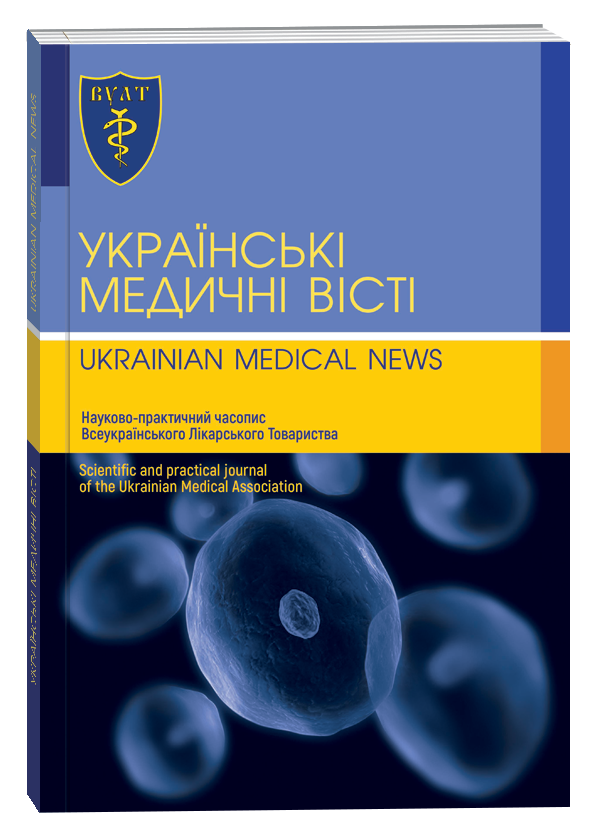ON THE QUESTION OF THE SIGNIFICANCE OF THALASSOGENIC INFECTIONS
DOI:
https://doi.org/10.32782/umv-2025.1.17Keywords:
recreational waters, thalassogenic infections, pathogensAbstract
The relevance of the problem is due to the growing risk of infectious thalassogenes (“thalass” – sea), the causative agents of which are found in a wide range of taxonomic groups. This is supported by a steady increase in the number of reports of recreational and professional users of seawater developing gastrointestinal, respiratory, dermatological disorders and ENT infections.Goal. Analysis of literature data on thalassogenic infections and substantiation of the importance of this problem.Materials and methods. The following methods were used in the work: analytical, information search, descriptive and generalization. To obtain data, an analysis of the scientific literature was carried out on the generalization of the results of research on thalassogenic infections.The results. As a result of the literature data analysis, the dose-dependent relationship between gastrointestinal pathologies and the quality of recreational waters, based on the level of contamination with indicator bacteria, was confirmed. The points of view of leading experts on this problem regarding the investigation of the causes of numerous outbreaks and cases related to the use of recreational waters are highlighted. The legality of the development of WHO recommendations on the quality of water suitable for recreation and sports for health protection authorities, as well as the general public, including tourism and management of beach resorts worldwide, is substantiated.Conclusions. It is recognized that it is necessary to carry out domestic epidemiological and microbiological studies of thalassogenic infections.
References
1. Mosely J.W. Epidemiological aspects of microbial standards for bathing beaches. Discharge of Sewage from Sea Outfalls. Proceedings of an International Symposium, London / Edit. A.L.H. Gamesson. Oxford : Pergamon Press, 1974. P. 80–93.
2. Fleisher J.M., Jones F., Kay D., Stanwell-Smith R., Wyer M., Morano R. Water and non-water-related risk factors for gastroenteritis among bathers exposed to sewage-contaminated marine waters. Int. J. Epidemiol. 1993. № 22. P. 698–708. DOI: 10.1093/ije/22.4.698.
3. Shuval H.I. United nations environment programme. Thalassogenic diseases. UNEP Regional Seas Reports and Studies. 1986. № 79. 44 p.
4. Cabelli V.J. Health effects criteria for marine recreational waters – R & D Report № EPA-600/1-80-031. U.S. Environmental Protection Agency. Research Triangle Park N.C. August. 1983. P. 98.
5. Hill B. The environment and disease: association or causation? Proceedings of the Royal Society of Medicine. 1965. V. 58. P. 295–300.
6. Shuval H. Estimating the global burden of thalassogenic diseases: human infectious diseases caused by wastewater pollution of the marine environment. J. Water Health. 2003. № 1. P. 53–64.
7. Shuval H.I. Scientific, Economic and Social Aspects of the Impact of Pollution in the Marine Environment on Human Health – A Preliminary Quantitative Estimate of the Global Disease Burden. An unpublished report dated August 14, 1999 prepared for the Division on the Protection of Human Environment, WHO and GESAMP. 1999. 28 p.
8. Pruss A. Review of epidemiological studies on health effects from exposure to recreational waters. Int. J. Epidemiol. 1998. № 27. P. 1–9. DOI: 10.1093/ije/27.1.1.
9. WHO Guidelines for Safe Recreational Water Environments. V. 1. Coastal and Freshwaters. WHO, Geneva, Switzerland, 2003.
10. WHO Guidelines for Safe Recreational Water Environments. V. 2. Swimming Pools. Spas and similar recreational-water environments. WHO, Geneva, Switzerland. 2005.
11. WHO Expert Consultation on Health Impacts of Recreational Water and Bathing Beach Quality. Bad Elster. Germany. 20–22 June 1996. EUR/ICP/EHPM 07 02 02. WHO EURO. Copenhagen, 1997.
12. Wade T.J., Pai N., Eisenberg J.N.S., Colford J.M., Jr. Do U.S. Environmental Protection Agency water quality guidelines for recreational waters prevent gastrointestinal illness? A systematic review and meta- analysis. Environ Health Perspect. 2003. № 111 (8). P. 1102–1109. DOI: 10.1289/ehp.6241.
13. Henrickson S.E., Wong T., Allen P., Ford T., Epstein P.R. Marine swimming-related illness: implications for monitoring and environmental policy. Environ Health Perspect. 2001. № 109 (7). P. 645–650. DOI: 10.1289/ehp.01109645.
14. Pond K. Water Recreation and Disease Plausibility of Associated Infections: Acute Effects, Sequelae and Mortality. World Health Organization (WHO), 2005. 260 p.
15. Kay D., Bartram J., Prüss A., Ashbolt N., Wyer M.D., Fleisher J.M., Fewtrell L., Rogers A., Rees G. Derivation of numerical values for the World Health Organization guidelines for recreational waters. Water Research. 2004. № 38. P. 1296–1304. DOI: 10.1016/j.watres.2003.11.032.








